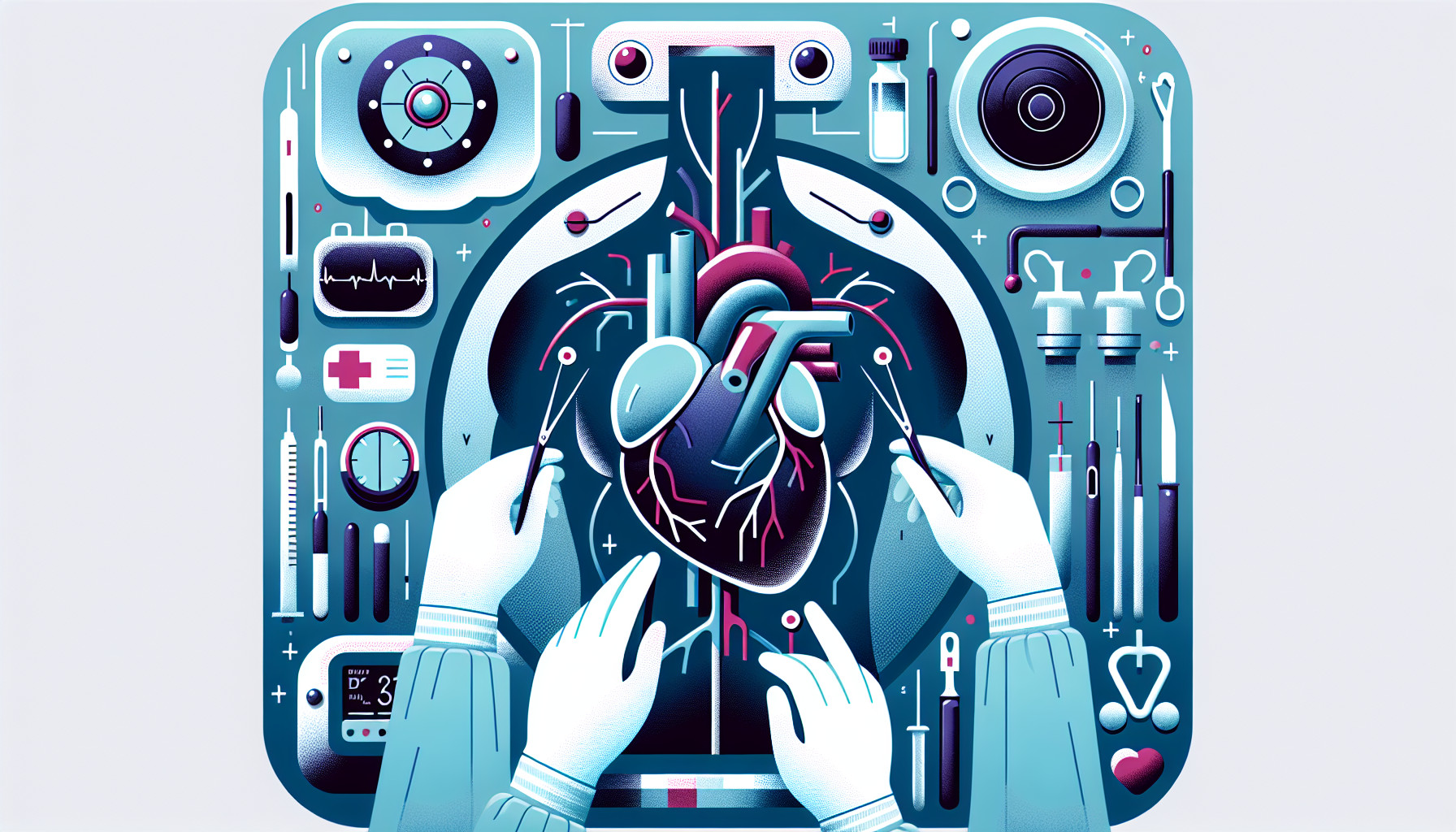Our Summary
This research study looks at a new way to check if blood vessels used to replace blocked heart arteries are still open. This is important because if these vessels get blocked, it can lead to serious heart problems. The researchers used a type of scan called a non-contrast CT, which doesn’t use dye to highlight the blood vessels.
The study included 73 patients who had previously had heart bypass surgery. Two readers looked at the scans and used certain features, like the shape of the vessel and whether it looked collapsed, to figure out if the vessel was still open. They then compared their findings with results from a different type of scan that is typically used to confirm if the vessel is open or blocked.
The results showed that this new method correctly identified whether the vessel was open or blocked about 89% of the time. However, it did not work well for one specific type of vessel (the left internal mammary artery graft).
This method could be especially useful for patients who are at low to medium risk and have symptoms like chest pain or shortness of breath. It could also be helpful for patients who can’t have scans with dye. The researchers conclude that this method is a promising way to check on these types of vessels after heart bypass surgery.
FAQs
- What is the new method proposed by this research study for checking if the blood vessels used in heart bypass surgeries are still open?
- How effective was this new method in identifying whether the blood vessel was open or blocked?
- Who could potentially benefit from this new method of checking the blood vessels post heart bypass surgery?
Doctor’s Tip
A helpful tip a doctor might give a patient about coronary artery bypass is to follow up regularly with your healthcare provider for monitoring of the blood vessels used in the surgery. This new method of using non-contrast CT scans could be a valuable tool in detecting any potential blockages or issues with the blood vessels, so it’s important to stay on top of your follow-up appointments and screenings. Additionally, it’s important to maintain a healthy lifestyle with regular exercise, a balanced diet, and not smoking to help prevent further heart issues.
Suitable For
Patients who have previously had heart bypass surgery are typically recommended for coronary artery bypass. Additionally, patients who are at low to medium risk and are experiencing symptoms like chest pain or shortness of breath may also be recommended for this procedure. Furthermore, patients who are unable to have scans with dye may benefit from this new method of checking the blood vessels.
Timeline
Before coronary artery bypass surgery, a patient may experience symptoms such as chest pain, shortness of breath, and fatigue due to blocked heart arteries. They may undergo tests such as an angiogram to determine the severity of blockages and decide on the need for surgery.
During coronary artery bypass surgery, a patient’s blocked arteries are bypassed using blood vessels from another part of the body, typically the chest or leg. This allows blood to flow freely to the heart muscle, relieving symptoms and reducing the risk of heart attack.
After coronary artery bypass surgery, a patient will typically stay in the hospital for a few days for monitoring and recovery. They will be closely monitored for signs of infection, bleeding, and other complications. They will also undergo cardiac rehabilitation to improve their heart health and prevent future heart problems.
In the long term, a patient who has had coronary artery bypass surgery will need to make lifestyle changes such as eating a healthy diet, exercising regularly, quitting smoking, and taking medications as prescribed. They will also need regular follow-up appointments with their healthcare provider to monitor their heart health and check the status of the bypassed arteries.
What to Ask Your Doctor
- Can you explain the importance of checking the blood vessels used in my heart bypass surgery to make sure they are still open?
- How often should I have these blood vessels checked and what are the typical methods used for this?
- What are the benefits of using a non-contrast CT scan compared to other types of scans that use dye?
- Will this new method be effective for checking all of the blood vessels used in my heart bypass surgery, or are there specific vessels that it may not work well for?
- What are the potential risks or limitations associated with using a non-contrast CT scan for this purpose?
- How will the results of this scan impact my ongoing heart health management and treatment plan?
- Are there any specific symptoms or risk factors that would indicate the need for this type of scan in the future?
- How does the accuracy of this new method compare to more traditional methods of checking the blood vessels after heart bypass surgery?
- Are there any additional tests or procedures that may be recommended based on the results of this scan?
- Are there any other research studies or advancements in technology related to monitoring the blood vessels after heart bypass surgery that I should be aware of?
Reference
Authors: Chamberlin JH, Smith CD, Van Swol E, Maisuria D, Baruah D, Schoepf UJ, Burt JR, Kabakus IM. Journal: Acta Radiol. 2023 Oct;64(10):2722-2730. doi: 10.1177/02841851231196873. Epub 2023 Aug 30. PMID: 37649280
